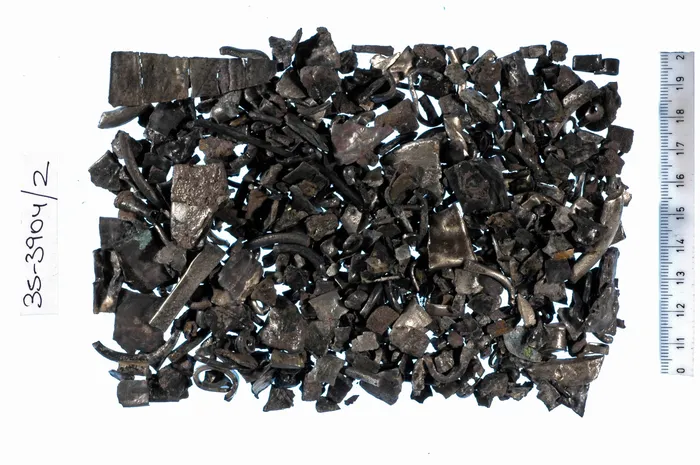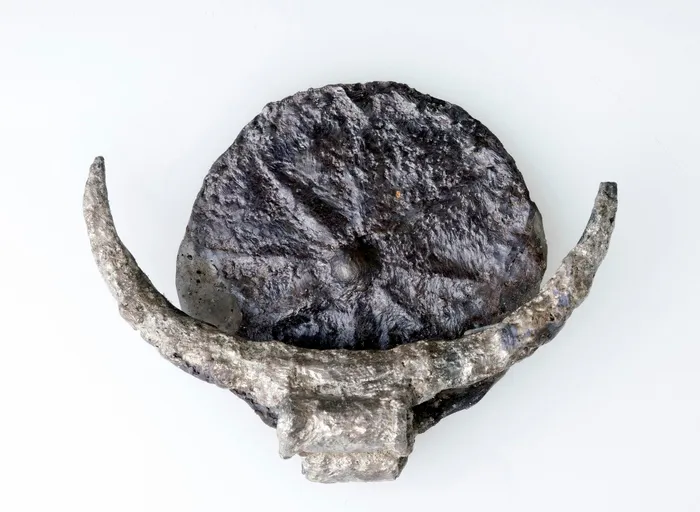Payment with silver pieces started in Mesopotamia and Anatolia, now learned to appear in Palestine much earlier than thought.
Based on cuneiform records and archaeological findings, researchers explain that the usage of silver bits, sheep wool, grain, and other materials as pre-monetary currency appears to have started in Anatolia, Mesopotamia, and Syria in the third millennium B.C.E.
Only in the Iron Age, or around 3,200 years ago, is it considered to have spread to the southern Levant, including modern-day Israel. However, according to Tzilla Eshel, Ayelet Gilboa, Ofir Tirosh, Yigal Erel, and Naama Yahalom-Mack, based on discoveries around Israel from that period – including at Megiddo, Gezer, and Shiloh – the use of silver as currency emerged here as much as 3,700 years ago in the Middle Bronze Age.
In detail, silver for non monetary purposes, such as jewelry and vessels, began to arrive in the southern Levant earlier. The oldest silver hoard discovered in area was at a cultic site in Nahariya, Israel’s northernmost region, and dates back to the early Middle Bronze Age, approximately 4,000 years ago. The hoard included sheet figurines, metal tools, thin sheets, and scrap (apparently for metalworking rather than payment), according to the team. Similar early silver hoards with no commercial hallmarks were discovered in northern settlements such as Dan, Beth She’an, Megiddo, and Gezer.
According to Haaretz‘s post, hoards discovered at Shiloh, another hoard at Gezer, and a site named Tell el-‘Ajjul, all of which date to the Middle Bronze Age, a time characterized by urbanisation, provide the first local evidence for silver being used as money.
How can one tell whether an ancient silver hoard was intended for use for profit or for non-profit purposes thousands of years ago?. The lack of smithing tools, lack of a workshop background, and composition of bent or broken items in the hoards discovered at Gezer, Shiloh, and Tell el-‘Ajjul show that the silver in them was kept for its intrinsic value.
Hacksilber are ancient, nonstandard bits of damaged and aesthetically unappealing silver used for commerce thousands of years ago -the German word for bits of cut silver-.
Although copper smelting may have begun in what is today Israel 6,500 years ago (or even earlier elsewhere), silver was not locally produced. Israel possesses copper ore (King Solomon’s mines), but no silver, therefore any silver discovered there had to be imported, even during the Bronze and Iron Ages.



In the ancient Levant, silver came from Türkiye. Silver does not occur naturally in the Levant and is therefore a proxy of long-distance, usually maritime, trade,” the team notes. Metals were traded as ingots by the ancients, according to shipwrecks in the Mediterranean.
According to isotopic analyses, the earliest silver discovered in the southern Levant was most likely produced in Anatolia during the Middle Bronze Age. The discovery at Tell el-‘Ajjul suggests that the source slightly relocated to the Anatolian-Aegean-Carpathian area by the Late Bronze Age.
Except this, the team is amazed that the silver discovered in Tell el-‘Ajjul appears to be of the same sort as that discovered in the contemporaneous Royal Shaft Graves in Mycenae in the Greek Peloponnese. The silver in both assemblages, according to their theory, came from the same source, possibly through early metal machers in Cyprus.
The authors go on to say that it is obvious that ships were cruising the Mediterranean coasts during the Middle Bronze Age. And they assert that shipping did occur between the Levant and Anatolia even though it was not a major target like Egypt was, for example.
In the case of commercially hoarded silver, it is reasonable to assume that a hoard comes to light after thousands of years because the owner was killed before having a chance to use it, or to recover it after fleeing from some marauding enemy (though other explanations can come to mind). On the other hand, there could also be treasures buried under the foundations of the house to persuade supernatural forces to protect the house. According to Eshel, such a hoard was discovered in Gezer.
A hoard, in any case, was not the same as a wallet or pocketbook. Such purchases would have been reserved for major transactions. In fact, these stashes are not used much on their own, but rather represent wealth.
The Bronze and Iron Age hacksilber hoards are made up of unusual objects with weight-based value that were either atypically cut or came from shattered jewelry. According to Eshel, the owner of the ass would demand x weight in hacksilber rather than x pieces of silver. She claims that there was no planning done to create items that had, say, a certain weight. The amount of actual silver they contained was vital to fair trade because the silver shards used in commerce were not regular in size or shape, according to the archaeologists.
Cover Photo: A silver sun deity relic discovered in northern Israel’s ancient Gezer village. Clara Amit, Israel Antiquities Authority
